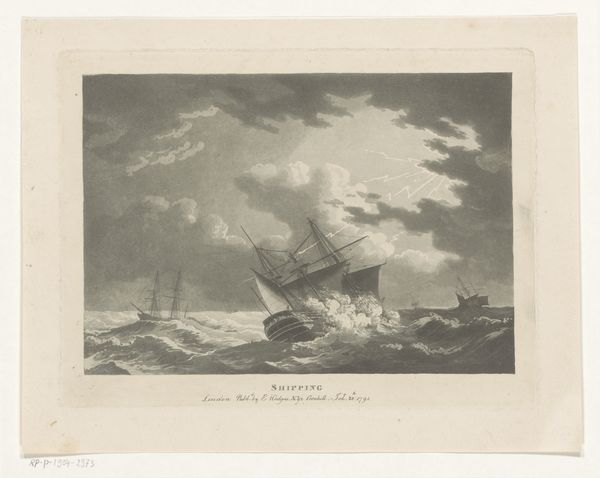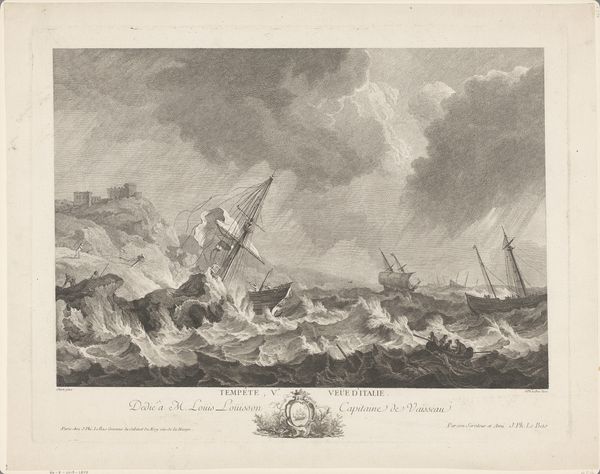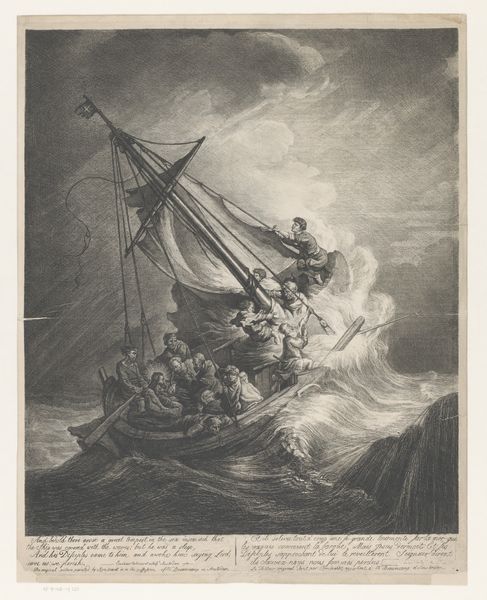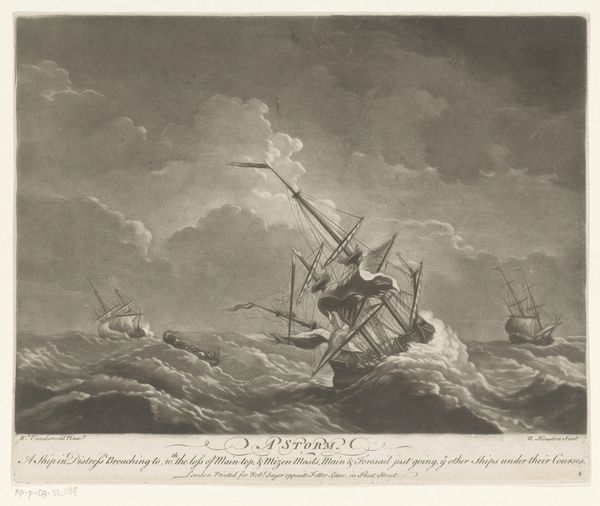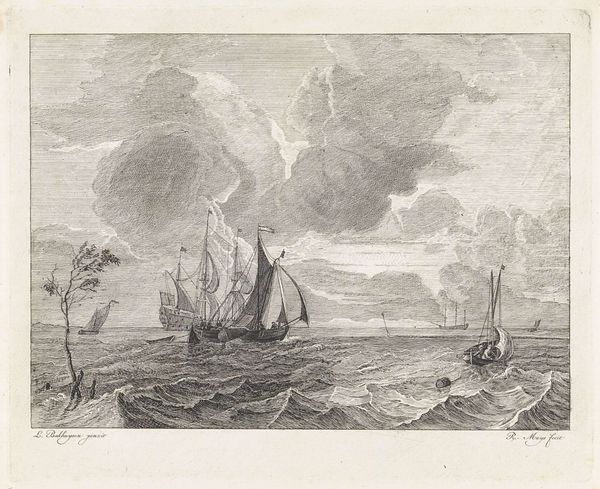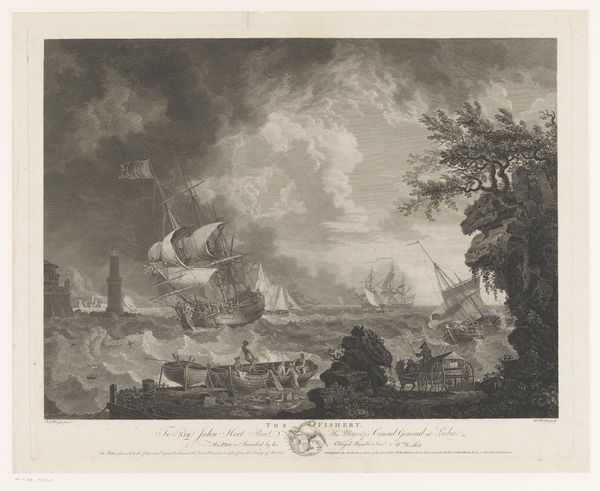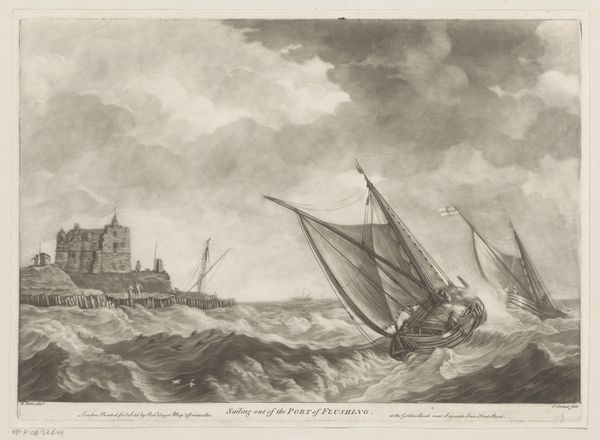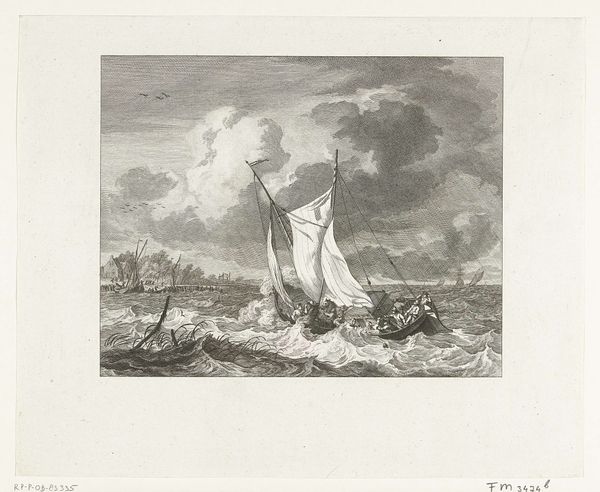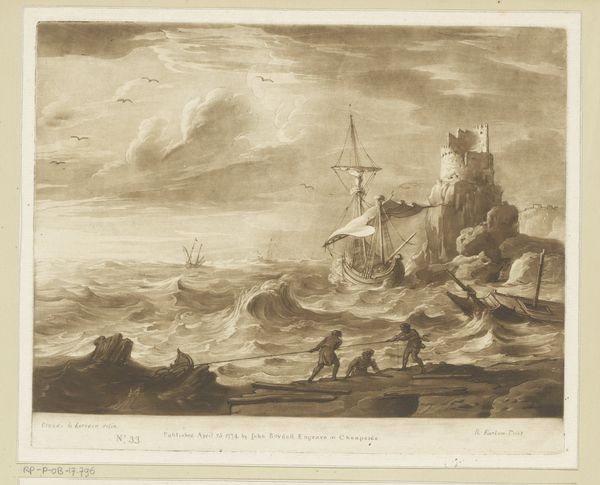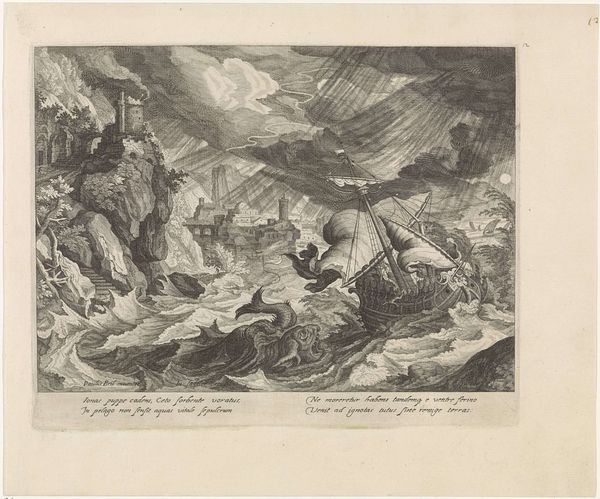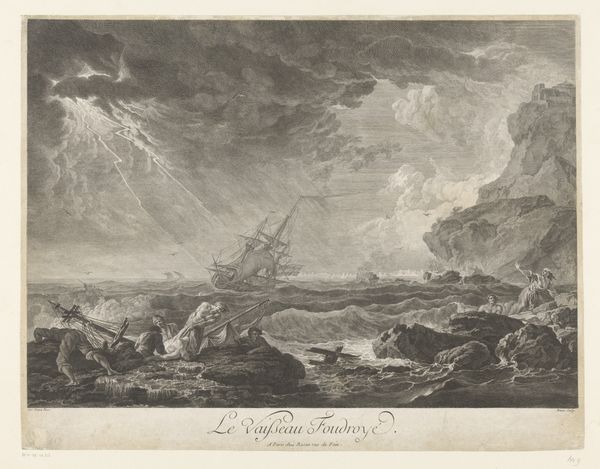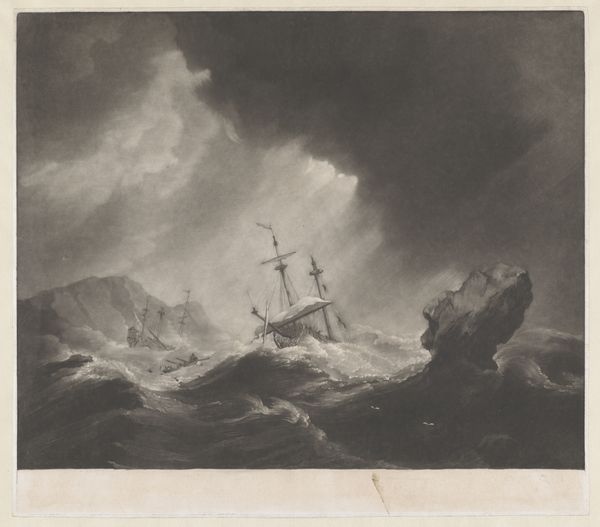
Dimensions: height 331 mm, width 389 mm
Copyright: Rijks Museum: Open Domain
Editor: This is "The End of a Storm at Sea," an engraving from sometime between 1752 and 1816, currently held in the Rijksmuseum. The detail is incredible, and the artist really captures the movement of the waves. What stands out to you from a formal perspective? Curator: The composition immediately draws my attention. Notice how the artist has structured the space. The diagonal lines of the waves create a dynamic rhythm that moves the eye across the surface. The varying densities of line also produce interesting tonal variations that really make it an interesting work from a purely technical point. Editor: I see what you mean about the rhythm. It's almost musical. What about the use of light and shadow? Curator: Indeed, the engraver has used chiaroscuro, not to create illusionistic depth, but rather as an arrangement of contrasting forms, independent of a single, consistent light source. For instance, the clouds are treated as textured blocks against the lighter sea. Ask yourself, what function do the small, precise lines describing the ships fulfill? Editor: I think they contrast with the more gestural lines used for the water and sky. They show the skill involved to depict the boats! It does so much by varying those different engraving line techniques. Curator: Precisely. What's also crucial to note is the surface of the print itself – its texture and how it interacts with light. These physical properties contribute to its overall aesthetic impact. Editor: So it's not just what's depicted, but also how it's depicted, and what it’s depicted on! I'll definitely look more closely at technique now. Curator: Always return to the visual experience of the art itself, interrogate the formal arrangements that contribute to meaning and affect.
Comments
No comments
Be the first to comment and join the conversation on the ultimate creative platform.
